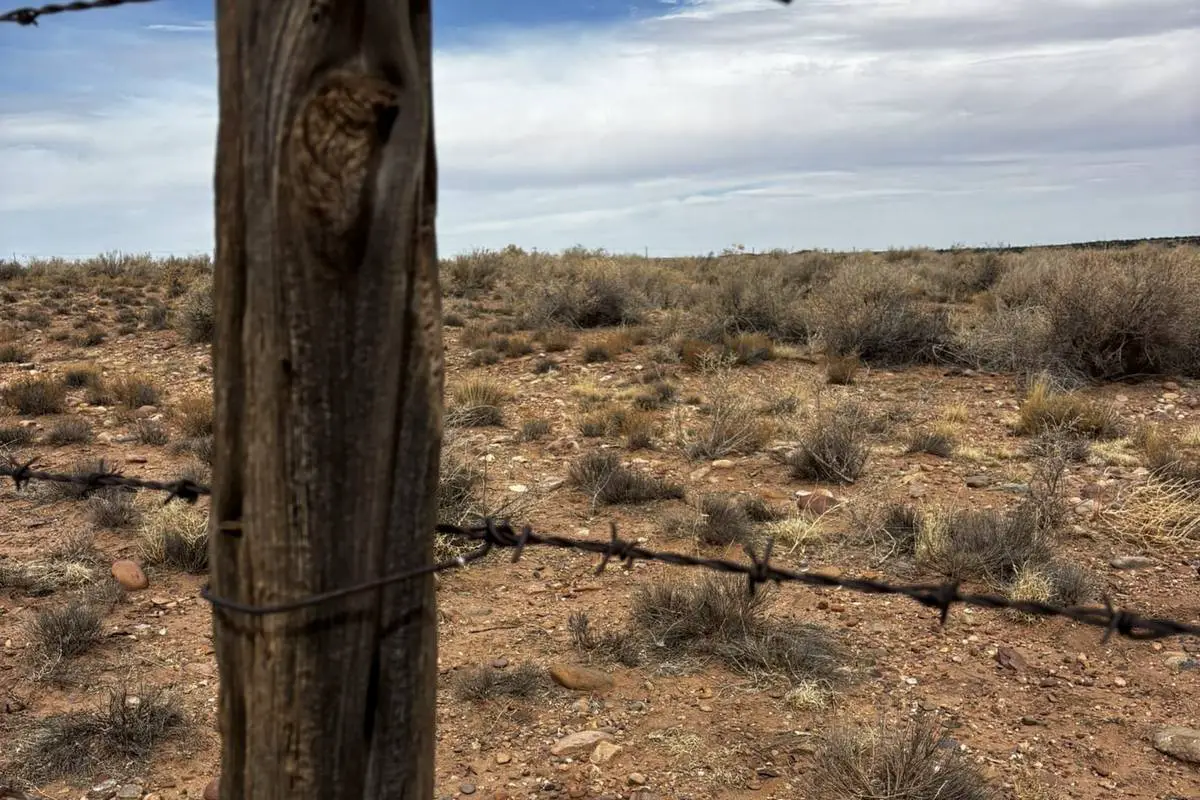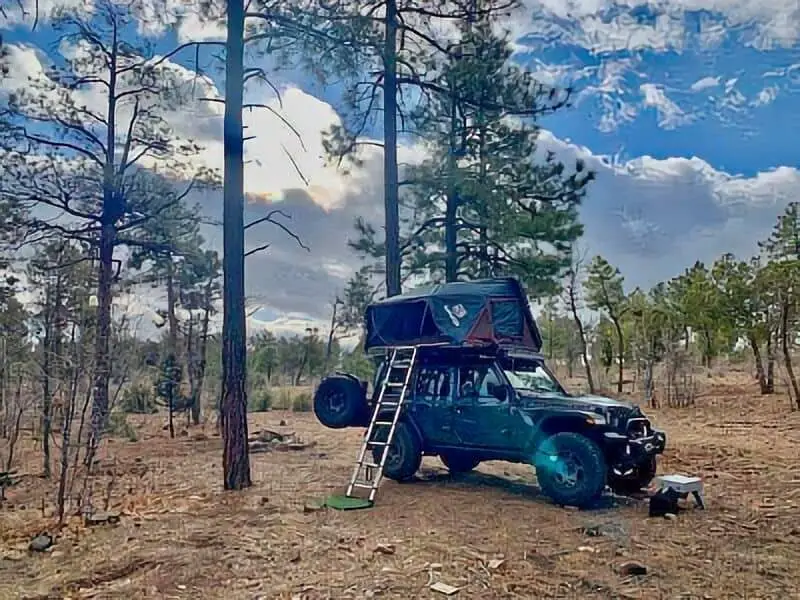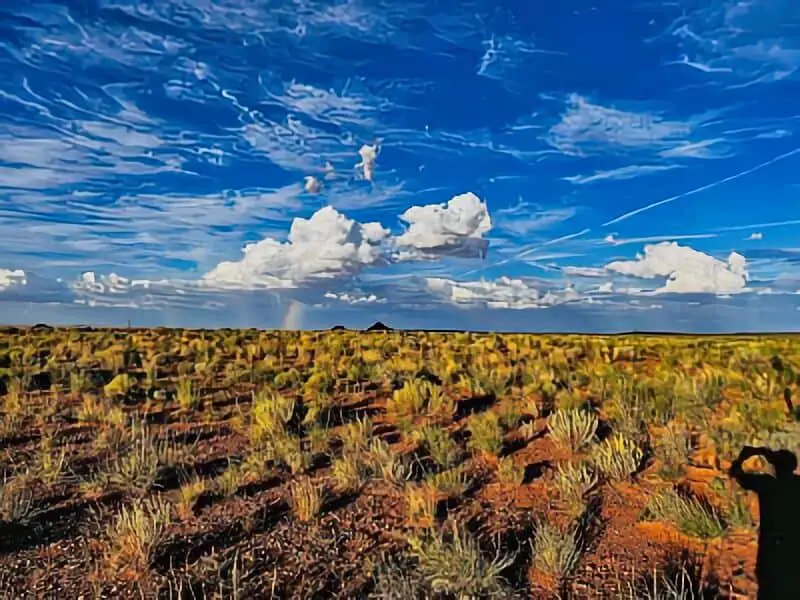
4 Snowflake Boondocking Locations: If you’re itching to try some Snowflake boondocking sites , Arizona, you’ve got a handful of solid choices for free or cheap camping. Some of the best spots are the dispersed camping areas in the nearby national forests, where you can stay off-grid and skip the campground crowds. You’ll get a more natural, quiet vibe out there.
Most of these Snowflake boondocking sites pop up in the Coconino National Forest, where you can camp on public land as long as you follow the rules. Amenities are pretty much nonexistent, so you’ll need to haul in your own water and supplies. Sure, there are RV parks and campgrounds near Snowflake, but if you want the real Snowflake boondocking sites experience, aim for the forest lands just outside town.
Description And Information About This Location
Snowflake, Arizona, sits at about 5,600 feet. So, it’s noticeably cooler than those lower desert Snowflake boondocking sites. Nights can get chilly, especially during spring and fall—don’t skimp on warm gear. The elevation also means you get some killer stargazing on clear nights.
You’ll mostly find Snowflake boondocking sites around the town and in the national forests nearby. It’s perfect for folks craving a quieter, more natural stay. Most sites are off-grid and you’ll probably drive down dirt roads to get there, so a reliable vehicle is a must. Some areas welcome both tents and RVs, but don’t expect trash pickup or restrooms.
A few things to keep in mind:
- Access: Use Forest Service roads and public lands nearby
- Rules: Check local regs—some spots need permits
- Pets: Usually fine, just keep them under control
- Facilities: Pretty much none; bring everything you need
You’ll get peaceful views—pine forests, red rocks, maybe some wildlife if you’re lucky (or unlucky, depending on your food storage). Please, pack out your trash and keep it clean.
Location And Access
If you’re boondocking near Snowflake, you’ll probably end up on BLM (Bureau of Land Management) land or national forest land. These places sit away from developed campgrounds, so you get that remote experience.
You’ll find Snowflake boondocking sites in the Coconino National Forest—they allow boondocking in several areas, but don’t expect water or restrooms. Pack what you need.
Most access roads are dirt or gravel. Some are decent for regular cars, but if it rains or you want to go deeper, you’ll want a high-clearance vehicle or even four-wheel drive.
If you want more amenities, nearby campgrounds like Aj’s Getaway RV Park or KOA Journey in Holbrook are options. They’re good bases if you want some comforts.
Here’s a quick comparison:
| Location | Land Type | Road Access | Amenities |
|---|---|---|---|
| Coconino National Forest | National Forest | Dirt, gravel roads | None (dispersed) |
| BLM Land | Federal Public Land | Varies | None |
| Nearby Campgrounds | Private or State | Paved or gravel roads | Water, restrooms |
Always check local rules before you set up camp—some Snowflake boondocking sites BLM areas have seasonal closures or restrictions. Some spots fill up faster, so arriving early helps.
Directions: How To Get There And What To Expect
To get to the Snowflake boondocking sites, head east off Interstate 40 at the Sun Valley exit. Local roads will take you south, and you’ll cross a small bridge where there’s a handy convenience store for last-minute supplies. Traffic’s light out here, so RVs and smaller rigs have it pretty easy.
If you’re coming from Snowflake, just take Highway 377 south. The roads will guide you toward the more natural areas popular for camping without hookups. It’s quiet, but you won’t find many services—bring all your water, food, and fuel.
Expect dry camping—open spaces, lots of nature. Some sites are inside or near the Petrified Forest National Park, about an hour southeast of Snowflake. The park’s famous for its fossilized wood and wild desert colors.
If you camp near the Petrified Forest, stick to the rules and stay in designated areas—it’s protected. Outside the park, you’ll find more dispersed camping with fewer rules, but also less shade and no facilities.
What to Bring:
- Water and food for your whole stay
- Full fuel tanks and a spare tire
- Shade structures or awnings—the sun can be brutal
Wildlife wanders through sometimes at all of the Snowflake boondocking sites, and the weather can change fast. Cell service is spotty, so plan ahead. Download maps or bring a GPS so you don’t get turned around on those less-marked roads.
Amenities And Activities
If you’re take advantage of these Snowflake boondocking sites, expect the basics—maybe drinking water and fire pits in a few spots, but mostly you’re on your own. Trailers and RVs need to be self-sufficient.
Some campgrounds offer electric and water hookups, which helps if you’re in an RV. Look for dump stations if you need to empty tanks, but don’t count on them everywhere. Restrooms and picnic tables show up at some campgrounds, but not at most dispersed sites.
There’s plenty to do outside. Hiking and biking trails wind through the forest and desert. If you like fishing or boating, a few local water spots are worth checking out—bring your own gear.
Some trails are good for horseback riding or off-road vehicles if that’s your thing. And if you want to explore, lots of scenic drives cut through the area.
If you camp on a local farm or vineyard, you might find farm tours or even wine tasting. Either way, bring your own water and trash bags—most sites don’t offer any services.
| Amenity | Availability | Notes |
|---|---|---|
| Water | Limited | Bring extra if boondocking |
| Electric Hookup | Some private sites | Good for trailers/RVs |
| Restrooms | Some campgrounds | Primitive in dispersed areas |
| Fire Pits | Usually present | Check fire restrictions |
| Trails | Plenty nearby | Hiking, biking, horseback |
| Dump Stations | Selected campgrounds | Needed for trailers/RVs |
Camping Regulations And Restrictions
Snowflake boondocking sites means following a few important rules to keep the place safe and wild. Most areas allow free dispersed camping, but you won’t find water or toilets.
Fire season brings strict bans—campfires, charcoal, and open flames might be off-limits. Always check fire alerts before lighting anything.
You can camp outside developed sites without paying, but you need to respect the land:
- Pack out all your trash
- Don’t harm plants or trees
- Stick to established roads and campsites when you can
Some national forests around Snowflake let you camp almost anywhere, but don’t expect amenities.
| Rule | Details |
|---|---|
| Fire Restrictions | No fires during Stage 1 & 2 alerts |
| Fees | Usually free in dispersed areas |
| Facilities | Rarely provided (water, toilets, etc.) |
| Leave No Trace | Required to protect the environment |
Check for seasonal or temporary restrictions before you head out. It’s the best way to avoid surprises.
Leave No Trace
When you use these Snowflake boondocking sites, Leave No Trace really matters. It keeps the place looking good for everyone.
Pack out everything—trash, food scraps, whatever. Don’t leave anything behind, even if it seems harmless.
If you want a campfire, use an existing ring or a stove. Don’t cut live trees or snap off branches. And always make sure your fire’s dead out before you leave.
Stick to marked roads and trails—wandering off can wreck the plants and soil.
Give wildlife space. Don’t feed them or mess with their homes.
Here’s a quick list:
- Pack out trash and food
- Use existing fire rings or stoves
- Don’t harm plants or trees
- Stay on marked roads and trails
- Keep a safe distance from animals
It’s not hard, and it keeps Snowflake’s wild spots looking great for the next folks.
Helpful Information Links
Bureau of Land Management
Recreation.Gov
National Park Service
Arizona Park Service
Arizona Trust
Arizona Fish and Game
Over 10,000 Free Boondocking Locations
Boondocking Recipes for 1000’s Of Camping Meals

Snowflake Boondocking Locations Ultimate Guide
Free Snowflake Boondocking Sites

Los Burros
34.141178, -109.776392
Situated along Forest Service Road 300, commonly known as the Mogollon Rim Road, this boondocking site lies approximately five miles from Show Low, Arizona. The area offers dispersed camping amidst a forested landscape, providing a serene environment for campers seeking solitude and a connection with nature. The elevation is around 6,800 feet, offering cooler temperatures during the summer months. Campers should note that there are no amenities such as potable water or restrooms, so it’s essential to come prepared.
Things to Do:
The proximity to Show Low allows campers to explore local attractions such as Fool Hollow Lake Recreation Area, which offers fishing, boating, and hiking opportunities. Additionally, the Mogollon Rim provides panoramic views and numerous trails for hiking and wildlife observation. The area is also known for its abundant wildlife, including elk, deer, and various bird species, making it a haven for nature enthusiasts and photographers.
Directions:
From Show Low, head east on AZ-260 E for approximately 2 miles. Turn left onto Forest Service Road 300 (Mogollon Rim Road) and continue for about 3 miles to reach dispersed camping areas. The road is well-marked, and several pull-offs along the way offer suitable spots for camping.
Vehicle Access:
Forest Service Road 300 is a graded gravel road accessible by most vehicles in dry conditions. However, during or after inclement weather, the road may become challenging for low-clearance vehicles. It’s advisable to check road conditions before traveling. Larger RVs may find limited space for maneuvering, so smaller rigs or tent camping are more suitable.

Boondocking Show Low
34.206696, -110.098562
Situated near the banks of the North Fork of the White River on the Fort Apache Indian Reservation, Ditch Camp offers a primitive camping experience in a forested setting. The campground is maintained by the White Mountain Apache Tribe Game & Fish and features five designated campsites. The area is characterized by its dense pine forests and proximity to the river, providing a tranquil environment for campers seeking solitude and a connection with nature.
Things to Do:
The nearby North Fork of the White River is designated as a “Catch-and-Release” area, providing opportunities for fly fishing, particularly for brown trout and the rare Apache trout. The surrounding forest offers trails for hiking and wildlife viewing. Additionally, the Fort Apache Historic Park, located nearby, offers a glimpse into the rich history of the area, including the former military fort and the Theodore Roosevelt School.
Directions:
From Pinetop, Arizona, take AZ-260 E for approximately 15 miles. Turn right onto AZ-73 S and continue for about 6 miles. Turn left onto Forest Road 116 and follow signs to Ditch Camp. The roads are generally well-maintained, but it’s advisable to check conditions before traveling, especially during or after adverse weather.
Vehicle Access:
Access roads to Ditch Camp are unpaved and may be rough in certain areas. High-clearance vehicles are recommended, especially during or after adverse weather conditions. Larger RVs may find the roads challenging due to narrow passages and limited turnaround spots.
Paid Campgrounds

Bog Tank
34.053792, -109.728442
Situated on the Fort Apache Indian Reservation in Arizona, Bog Tank Campground offers a primitive camping experience in a forested setting near a small stream. This area is managed by the White Mountain Apache Tribe, and camping here requires a valid permit. The campground is located at an elevation of approximately 7,926 feet, providing cooler temperatures during the summer months. Campers should be prepared for a lack of amenities, as there are no restrooms, potable water, or designated campsites. The area is favored by campers seeking solitude, nature, and a quiet environment.
Things to Do:
The surrounding area offers numerous opportunities for outdoor recreation, including hiking, wildlife viewing, and fishing. The nearby stream is known for its trout fishing. Additionally, the Fort Apache Historic Park, located a short drive away, provides a glimpse into the rich history of the area, including the former military fort and the Theodore Roosevelt School.
Directions:
From Whiteriver, Arizona, take AZ-73 N for approximately 15 miles. Turn right onto Forest Road 116 and continue for about 5 miles to reach the campground. The roads are unpaved and may be challenging for low-clearance vehicles, so it’s advisable to check conditions before traveling.
Vehicle Access:
Access roads to Bog Tank Campground are unpaved and may be rough in certain areas. High-clearance vehicles are recommended, especially during or after adverse weather conditions. Larger RVs may find the roads challenging due to narrow passages and limited turnaround spots.

Cooley Lake
34.071269, -109.911098
Situated near McNary, Arizona, Cooley Lake Campground offers a designated camping experience in a forested setting near a small lake. This area is managed by the White Mountain Apache Tribe, and camping here requires a valid permit. The campground is located at an elevation of approximately 7,164 feet, providing cooler temperatures during the summer months. The campground features 10 designated campsites suitable for tent camping. Campers should be prepared for a lack of amenities, as there are no restrooms or potable water. The area is favored by campers seeking solitude, nature, and a quiet environment.
Things to Do:
The surrounding area offers numerous opportunities for outdoor recreation, including hiking, wildlife viewing, and fishing. The nearby lake is known for its trout fishing. Additionally, the Fort Apache Historic Park, located a short drive away, provides a glimpse into the rich history of the area, including the former military fort and the Theodore Roosevelt School.
Directions:
From McNary, Arizona, take AZ-260 E for approximately 2 miles. Turn right onto Forest Road 116 and continue for about 3 miles to reach the campground. The roads are unpaved and may be challenging for low-clearance vehicles, so it’s advisable to check conditions before traveling.
Vehicle Access:
Access roads to Cooley Lake Campground are unpaved and may be rough in certain areas. High-clearance vehicles are recommended, especially during or after adverse weather conditions. Larger RVs may find the roads challenging due to narrow passages and limited turnaround spots.
Frequently Asked Questions
Boondocking means knowing where to find free sites, what the rules are, and how to camp safely and responsibly. Timing matters too, especially in northern Arizona.
What resources can I use to discover free camping spots in the US?
Check out community-driven websites and apps listing free campsites. They usually have user reviews and details on each spot.
Maps from public land agencies help too—they’ll show you where dispersed camping is allowed.
Which states offer the most accessible public lands for free camping?
Western states like Arizona, California, Colorado, and Utah have tons of public land open for free camping.
You’ll find national forests and BLM land where dispersed camping is the norm.
Are there restrictions to watch for when using Snowflake boondocking sites?
Definitely. Most spots have time limits—usually 14 days in one place. Fire rules can be strict.
Some areas limit vehicle size or require you to keep a certain distance from water or trails.
Any tips for safe and responsible Snowflake boondocking?
Bring all the water, food, and power you’ll need—there are no hookups. Let someone know where you’re going, and watch the weather. Keep things tidy and pack out all your trash.
How can I do some Snowflake boondocking sites ethically in sensitive natural areas?
Stick to established roads and campsites so you don’t trample plants or bother wildlife.
Keep noise down, don’t feed animals, and use a portable toilet or dispose of waste the right way.
What are the best seasons for Snowflake boondocking sites?
Late spring through early fall usually works best—roads open up, campsites aren’t buried, and the weather’s actually pleasant.
Winter camping? Honestly, it can get rough out there with all the snow and freezing temps. Make sure you check local conditions before heading out.

